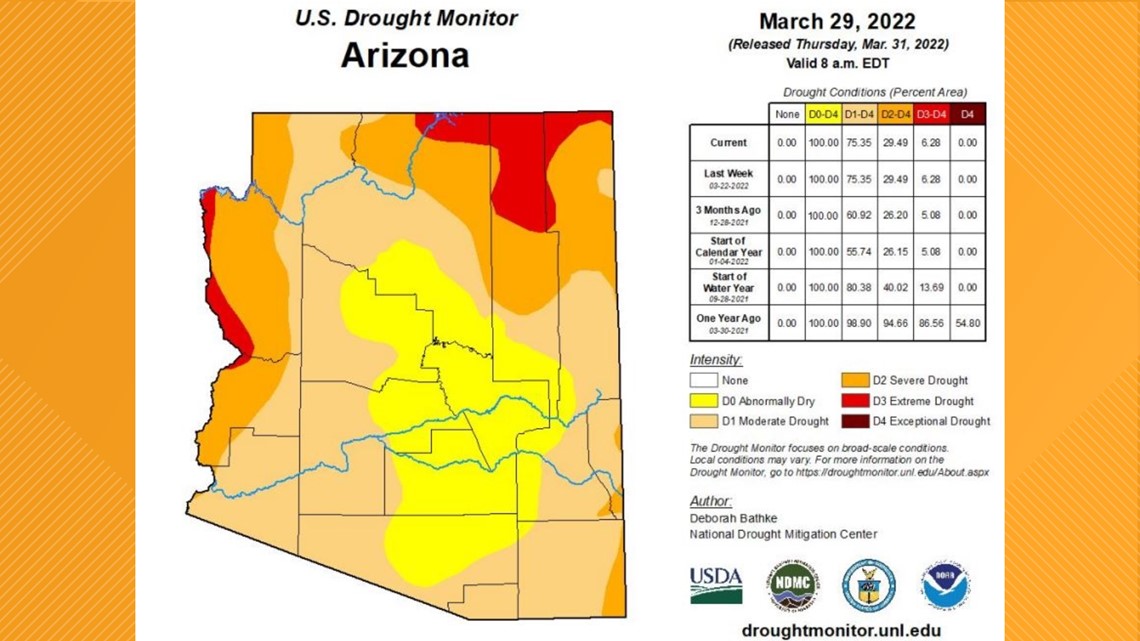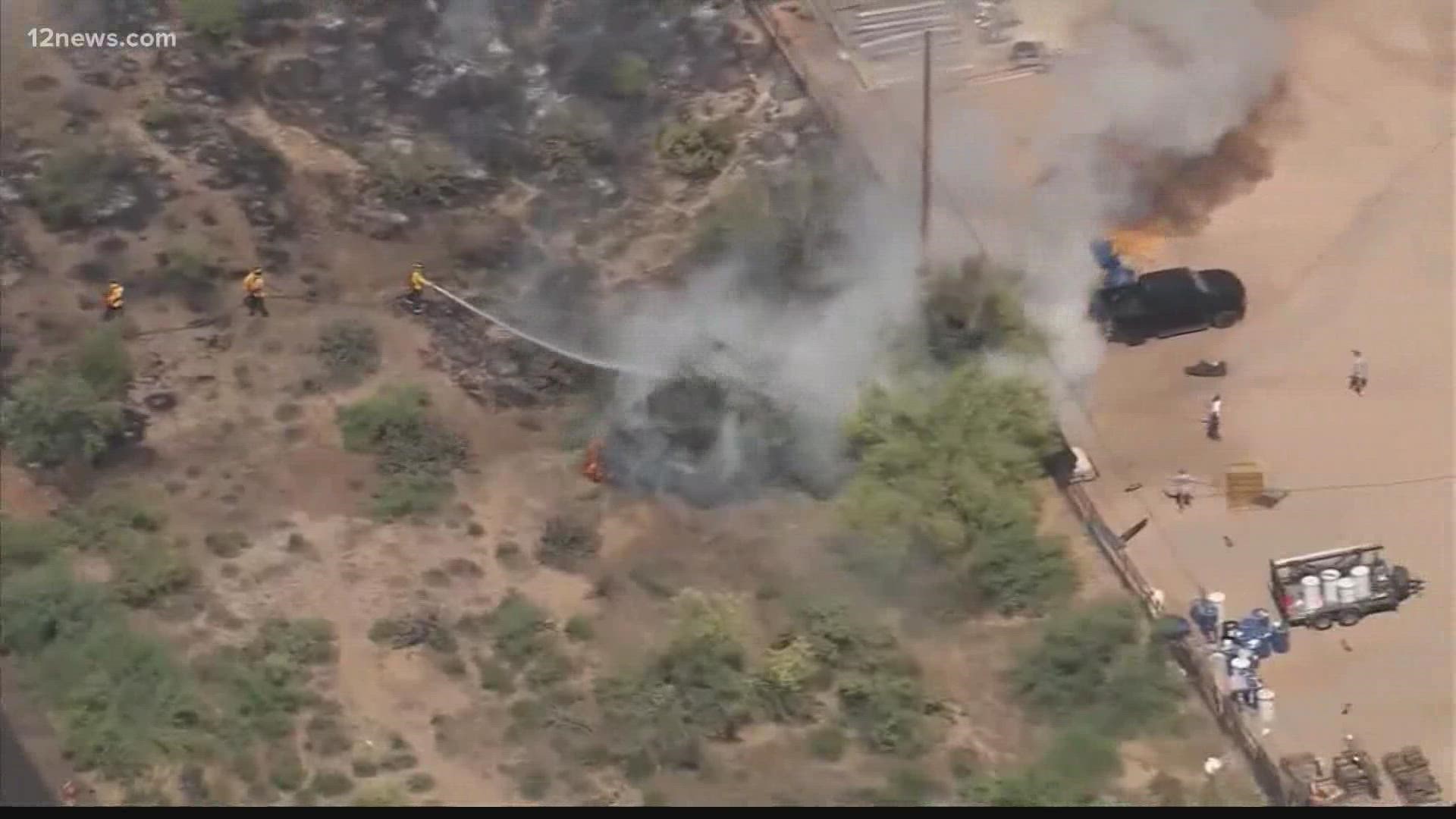FLAGSTAFF, Ariz. — Weather forecasters believe central Arizona has an "above normal" chance of experiencing wildland fires this month due to drier and warmer weather conditions.
According to the National Weather Service's monthly report, the central and southeastern areas of Arizona have the potential to see fire activity in April.
NWS believes the potential for fire activity will start to spread to other regions of the state as the fire season progresses.
"Above normal significant wildland fire potential should then gradually spread into the White Mountains region by May, with the above-normal significant wildland fire potential gradually spreading north and west into Yavapai County, the Mogollon Rim, and the Four Corners region by June," the NWS report states.
The state's current drought conditions show parts of Maricopa, Pinal, Gila, and Yavapai counties as being "abnormally dry," according to NWS.
Looking ahead to the summer, NWS said the extended outlook favors warmer than average conditions during fire season across Arizona with equal chances of above, near, or below-average precipitation.


Up to Speed
Catch up on the latest news and stories on the 12 News YouTube channel. Subscribe today.
Wildfire Go-Kit:
Residents in wildfire-prone areas are urged to have an emergency supplies kit to bring with them of they are evacuated from their homes, especially as Arizona residents are beginning to see early widespread fire activity throughout the state.
An emergency supply kit should be put together long before a wildfire or another disaster occurs. Make sure to keep it easily accessible so you can take it with you when you have to evacuate.
The National Fire Protection Association (NFPA) recommends that residents near a disaster store emergency supplies in a plastic tub, small suitcase, trash can, backpack, or other containers.
Residents should make sure they have the necessities, such as three gallons of water per person and a three-day supply of ready-to-eat food, the NFPA said. A first-aid kit, prescription medications, contact lenses, and non-prescription drugs should also be taken into account.
Copies of any important family documents, including insurance policies, identification, bank account records, and emergency contact numbers should also be taken and put into a waterproof, portable container in your kit, the NFPA said.
The association lists other items that would help in a disaster, including:
Sleeping bag or warm blanket for each person
Battery-powered or hand-cranked radio and an NOAA weather radio to receive up-to-date information
Dust mask or cotton T-shirt to filter the air
Matches in a waterproof container
Complete change of clothing including long pants, long sleeve shirts, and sturdy shoes stored in a waterproof container
Signal flare
The entire NFPA checklist of supplies can be found here.

